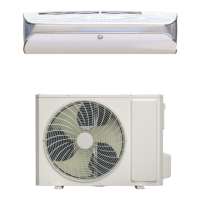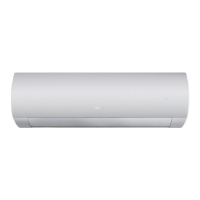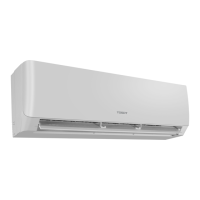a) Become familiar with the equipment and its operation.
b) Isolate system electrically.
c) Before attempting the procedure, ensure that:
– mechanical handling equipment is available, if required, for handling refrigerant
cylinders;
– all personal protective equipment is available and being used correctly;
– the recovery process is supervised at all times by a competent person;
– recovery equipment and cylinders conform to the appropriate standards.
d)
h) Do not overfill cylinders. (No more than 80% volume liquid charge).
i)
40
Specialist’s Manual
Labelling
Equipment shall be labelled stating that it has been de-commissioned and emptied
of refrigerant. The label shall be dated and signed. For appliances containing flam-
mable refrigerants, ensure that there are labels on the equipment stating the equip-
ment contains flammable refrigerant.
e)
Pump down refrigerant system, if possible.
If a vacuum is not possible, make a manifold so that refrigerant can be removed
from various parts of the system.
f)
g)
tions.
Make sure that cylinder is situated on the scales before recovery takes place.
Start the recovery machine and operate in accordance with manufacturer's instruc-
j)
sure that the cylinders and the equipment are removed from site promptly and all
isolation valves on the equipment are closed off.
k) Recovered refrigerant shall not be charged into another refrigeration system
unless it has been cleaned and checked.
Do not exceed the maximum working pressure of the cylinder, even temporarily.
When the cylinders have been filled correctly and the process completed, make
Decommissioning
Before carrying out this procedure, it is essential that the technician is completely
familiar with the equipment and all its detail. It is recommended good practice that
all refrigerants are recovered safely. Prior to the task being carried out, an oil and
refrigerant sample shall be taken in case analysis is required prior to re-use of
reclaimed refrigerant. It is essential that electrical power is available before the task
is commenced.
Recovery
When removing refrigerant from a system, either for servicing or decommissioning,
it is recommended good practice that all refrigerants are removed safely.
When transferring refrigerant into cylinders, ensure that only appropriate refrigerant
recovery cylinders are employed. Ensure that the correct number of cylinders for
holding the total system charge are available. All cylinders to be used are designat-
ed for the recovered refrigerant and labelled for that refrigerant (i.e. special cylin-
ders for the recovery of refrigerant). Cylinders shall be complete with pressure-re-
lief valve and associated shut-off valves in good working order. Empty recovery
cylinders are evacuated and, if possible, cooled before recovery occurs.
The recovery equipment shall be in good working order with a set of instructions
concerning the equipment that is at hand and shall be suitable for the recovery of all
appropriate refrigerants including, when applicable, flammable refrigerants. In addi-
tion, a set of calibrated weighing scales shall be available and in good working
order. Hoses shall be complete with leak-free disconnect couplings and in good
condition. Before using the recovery machine, check that it is in satisfactory working

